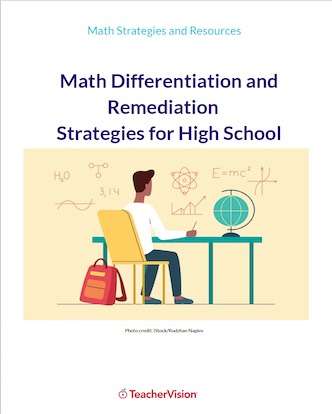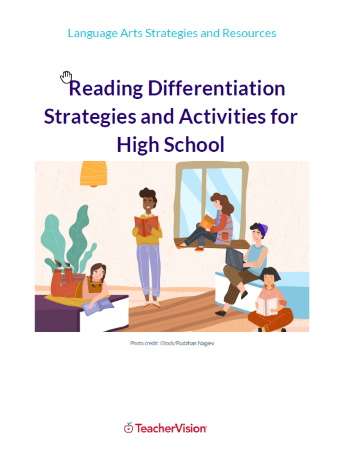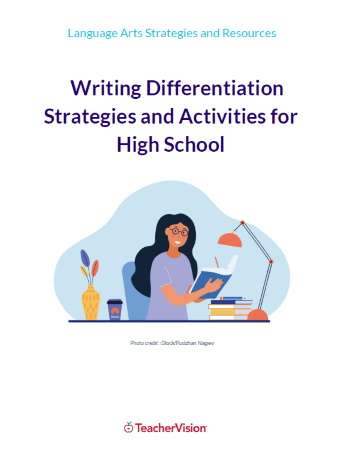Reducing Overrepresentation of Diverse Students
ERIC EC Digest #E596, Authors: Cynthia Warger and Jane Burnette, 2000
Five Strategies to Reduce Overrepresentation of Culturally and Linguistically Diverse Students in Special Education
Children from culturally and linguistically diverse backgrounds comprise a large percentage of public school students. Diversity is increasing, and one of the most troublesome issues associated with its growth is the overrepresentation of minority children in special education that is, more minority children are served in special education than we would expect based on their percentage in the general school population.
In the 1960s, at the height of the Civil Rights movement, the issue of disproportionality of minority students in special education first received national attention. Since that time, researchers and practitioners have studied the issue in an effort to understand and explain how the processes used to identify, assess, and place students in special education programs may contribute to the overrepresentation of minority students. In addition, they are identifying processes that successfully prevent inappropriate placement and ensure that the opportunities for educational achievement offered to minority students equal those offered to the majority group.
To this end, researchers Beth Harry and Janette Klingner, with support from the U.S. Office of Special Education Programs (OSEP), are investigating exemplary special education referral and decision making processes for culturally and linguistically diverse students. Although Harry and Klingner are in the early stages of their work, they are finding that professionals generally attribute overrepresentation to one of the following sources:
- family and community issues
- external pressures in schools
- classroom instruction and management
- teacher perceptions and attitudes
Promote Family Involvement and Respect Diverse Backgrounds
Researchers continue to point to family involvement in the school and its operation as a major factor in improving student achievement. However, researchers also show that for successful collaborations to occur, school personnel must respect the cultural background of the family.
Several years ago, the Highland Park School District in Michigan received support from OSEP to develop a demonstration model to prevent emotional disturbance and treat children with emotional disturbance in a culturally competent manner. Family involvement is a key component of the Highland Park approach. Throughout all aspects of the program, families are essential team members. They are key in identifying supports and designing implementation plans for the services they and their children receive. The success of the approach is based on an underlying belief that families are not the source of their children's difficulty, but rather are partners in planning for their children's needs.
Program staff have learned much about being culturally sensitive when interacting with families. LeVann Townsel, director of the program, offers the following recommendations:
- Take time to educate the family. Many families do not know what emotional disturbance means. They may not feel comfortable asking questions or they may view the process negatively. It is important to view this situation from the family's perspective.
- Go to the family. Whenever possible, meet with the family in the home.
- Arrange parent support groups. Help parents come together to support each other. Encourage them to develop advocacy skills.
- Find out what the parents need. Often, parents need support or an extra boost. Find out what might help them feel more confident.
- Push for parent membership on school and community teams and boards. Parents should be given opportunities to contribute their expertise in ways that are not directly related to their own child.
- Encourage parents to talk about their dreams for the child. Don't tell parents what is wrong with their situation. They already know.
- Know the difference between the culture of the family and the economic situation of the family. It is important to understand how poverty affects families.
- Learn as much about the family's culture as possible. Find out the values how they view disabilities and mental health issues.
Make the Curriculum Relevant
Children's learning is enhanced when they have opportunities to learn new skills in meaningful contexts. They respond positively to curricula that draw upon their own experiences and celebrate their heritages and cultures. When motivation is high, children tend to be more actively involved in learning.
With OSEP support, Susan Fowler, Dean at the University of Illinois, and her colleague, Beverly Lewman, in the Department of Special Education, have developed and are assessing the impact of a culturally appropriate preschool curriculum. SPARK which stands for Skills Promoted through Arts, Reading, and Knowledge is a preschool creative arts curriculum for teachers of young children with developmental delays or at risk of developing delays. SPARK is based on stories and resources from many cultural and ethnic traditions. It provides opportunities for preschool children to achieve developmental and school readiness skills by actively attending to stories and participating in activities based on music, art, and drama. Staff members report that the curriculum helps students who speak English as a second language learn English faster than students who were not exposed to the curriculum. Formal evaluations indicate that the curriculum helps children develop early learning skills, particularly increased vocabulary, print awareness, ability to print, and counting.
Build on Students' Strengths
Building on students' strengths has long been a principle of special education, but is a particular challenge in teaching students whose home language is not English. With OSEP support, Robert Jimenez has been studying the literacy strengths and difficulties faced by language minority students with learning disabilities in grades four to six. He has been developing instructional interventions based on teaching the strategies of high performers to low-performing students, and these interventions have produced excellent results.
Low-performing readers often have naive conceptions about the purpose of reading. For example, students from language-minority backgrounds often pursue finishing the task as their primary objective and believe that reading is synonymous with decoding and pronunciation of isolated words. Jimenez supports explicit instruction of strategic reading processes, including how to access what students know in their primary language. Strategies that successful bilingual readers share with successful monolingual readers include making inferences, drawing conclusions, integrating prior knowledge into ongoing meaning construction, and asking questions when comprehension breaks down.
In addition, Jimenez has identified some strategies that he suspects may be indicative of a bilingual schema for reading. Jimenez provides the following example. Searching for vocabulary is a reading strategy that draws on the native-language strength of Spanish-English bilingual students. When students are confronted with unfamiliar vocabulary, they check to see whether they know a related word in their own language. Related bilingual reading strategies include translating, transferring information across languages, and reflecting on text either in Spanish or English. These are strategies that help low- performing bilingual students improve comprehension, but they also appear to be indicators of a fairly well developed Spanish-English bilingual scheme for reading.
Take the Teacher Preparation Program to the Community
There is no better way to develop understanding of a culture than to live within it. With OSEP support, the University of Northern Arizona (NAU) is partnering with the Kayenta Unified School District to prepare teachers. Referred to as RAISE (Reaching American Indian Special/Elementary Educators), the project prepares both Navajo and non-Navajo university students to earn dual certification in special and elementary education.
Most of the Navajo students are currently working as paraprofessionals or general educators with the district. Non-Navajo students live in Kayenta, which is a very remote community in the Navajo Nation. The district provides the non-Navajo students housing at no cost, and in return the university students work in the schools daily from 8:00 a.m. until noon.
In addition, an NAU faculty member lives in Kayenta and teaches on site. According to Greg Prater, Program Director, having a faculty member on site, working and interacting with the students and school district community, provides university students with an increased opportunity to learn more about the culture and the language.
Provide District Support to Build the Capacity of Personnel
With OSEP support, the Tucson Unified School District is designing and implementing a plan to reduce disproportionality. According to Gail Bornfield, Director of Special Education for the district, the goal of this plan is to bring supports to children and instructional staff prior to referral for special education evaluation. The process allows instructional staff to look at children with high expectations and the belief that all children can and do achieve.The first and crucial step was to provide significant training in cultural awareness to instructional staff. As they put their training into operation, the district provides several levels of support:
- Behavioral specialists observe children in the classroom, prepare functional behavioral assessments, and work with the teacher to develop behavior management plans.
- Social workers work with families around problems that the child is experiencing at school, and in some cases, develop behavioral plans for the home.
- Instructional specialists are assigned to the classroom and to individual children as needed. They are responsible for carrying out the behavioral plan and monitoring interventions.
- A member from the child's cultural background on the IEP team provides essential information, especially when the team is determining eligibility for services for emotional disturbance.
- Teacher tips are written by staff and are available on the Web or in print form. The tips offer practical ways to integrate positive strategies to address culture in the classroom and through instruction.
- Study area departments are established for each of the following cultural and linguistic groups: African American, Hispanic, Native American, and Asian American. The department provides specialists and tutors.
These support systems provide additional perspectives and approaches to aid teachers and other district staff in developing their ability to work with students of different cultures. Such knowledge is essential if we are to reduce disproportionate representation and offer equal educational opportunity to all American students.








